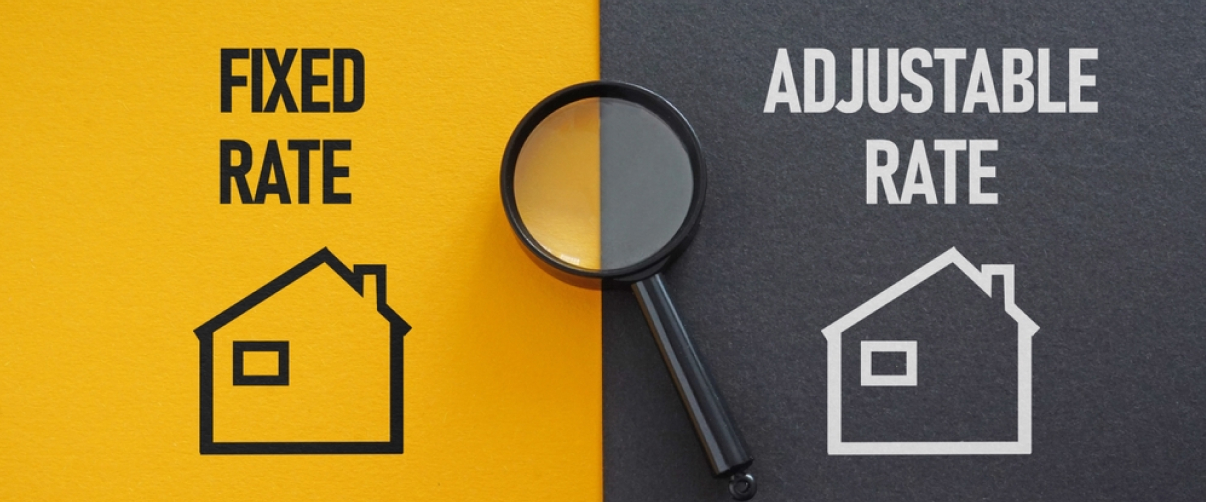When it comes to financing your dream home, choosing the right mortgage is a crucial decision that can impact your financial future. Understanding the differences between fixed-rate and adjustable-rate mortgages (ARMs) is essential in making an informed choice that aligns with your financial goals and circumstances.
Fixed-Rate vs Adjustable-Rate Mortgages: Which One is Right for You?

Understanding Fixed-Rate Mortgages
A fixed-rate mortgage offers a consistent interest rate and monthly payment throughout the entire term of the loan, typically 15, 20, or 30 years. This predictability simplifies budgeting and provides peace of mind, especially for those planning to stay in their homes long-term.
Advantages of Fixed-Rate Mortgages
-
Stable Payments: With a fixed-rate mortgage, your monthly payments remain the same, regardless of market fluctuations. This stability allows for easier budgeting and financial planning.
-
Protection from Rising Rates: You’re safeguarded against potential increases in interest rates over time, ensuring your payments won’t unexpectedly rise.
-
Simplicity: Fixed-rate mortgages are straightforward, making them easier to understand for first-time homebuyers.
Considerations
-
Higher Initial Interest Rates: Fixed-rate mortgages may have higher starting rates compared to ARMs, which could result in higher monthly payments initially.
-
Refinancing Costs: If market rates drop, you’ll need to refinance to take advantage of lower rates, which can involve additional fees and closing costs.
Understanding Adjustable-Rate Mortgages (ARMs)
An adjustable-rate mortgage starts with a lower initial interest rate and monthly payment for a set period (commonly 5, 7, or 10 years). After this introductory phase, the interest rate adjusts periodically based on market conditions, which means your payments can increase or decrease.
Advantages of ARMs
-
Lower Initial Rates: ARMs often start with lower interest rates than fixed-rate mortgages, making them attractive if you’re looking to save money upfront.
-
Potential Savings: If interest rates stay the same or decrease, your payments could remain low or even decrease without the need to refinance.
-
Ease of Qualifying: The lower initial payments might make it easier to qualify for a larger loan amount.
Considerations
-
Payment Uncertainty: After the initial period, your interest rate can adjust, leading to higher monthly payments. This uncertainty can make budgeting more challenging.
-
Complex Terms: Understanding how your ARM adjusts is crucial, including factors like adjustment frequency, indexes, margins, caps, and ceilings.
-
Risk of Rising Rates: In a rising interest rate environment, your payments could increase significantly, potentially leading to financial strain.
Factors to Consider When Choosing
How Long You Plan to Stay in the Home
-
Fixed-Rate Mortgage: Ideal if you plan to stay in your home for many years. The stable payments protect you from market volatility.
-
ARM: Beneficial if you expect to move or refinance within the initial fixed-rate period, allowing you to take advantage of lower initial rates.
Current Interest Rate Environment
-
Fixed-Rate Mortgage: In a low-interest-rate environment, locking in a fixed rate can be advantageous.
-
ARM: In a high-interest-rate market, ARMs offer lower initial rates, which could be beneficial if you anticipate rates will fall.
Risk Tolerance
-
Fixed-Rate Mortgage: Offers peace of mind for those who prefer certainty in their financial planning.
-
ARM: Suitable for borrowers comfortable with the possibility of rate and payment fluctuations.
Future Income Expectations
- ARM: If you expect your income to increase, you may be better positioned to handle potential payment increases when the rate adjusts.
Real-Life Scenarios
Scenario 1: Long-Term Homeownership
Sarah plans to purchase a home where she intends to live indefinitely. She values stability and wants predictable mortgage payments. A fixed-rate mortgage would provide her with consistent payments, making it easier to plan her budget without worrying about future rate changes.
Scenario 2: Short-Term Stay
Michael is buying a condo but knows he’ll relocate for work in a few years. He opts for an ARM to take advantage of the lower initial interest rate, reducing his monthly payments while he owns the property.
Tools to Help You Decide
Utilize mortgage calculators and financial tools to estimate your payments under different scenarios:
-
Fixed-Rate Mortgage Calculator: Helps estimate your monthly payment over the life of a fixed-rate loan.
-
ARM Calculator: Allows you to project potential payment changes when the interest rate adjusts.
Making Your Decision
Choosing between a fixed-rate and adjustable-rate mortgage depends on your personal circumstances, financial goals, and risk tolerance.
-
Assess Your Financial Situation: Consider your current financial stability and how potential rate changes could impact you.
-
Evaluate Market Conditions: Stay informed about current interest rates and economic forecasts.
-
Consult a Professional: Speaking with a mortgage advisor can provide personalized insights tailored to your situation.
Final Thoughts
Selecting the right mortgage is a significant step in your home-buying journey. By understanding the differences between fixed-rate and adjustable-rate mortgages, you can make a decision that aligns with your financial goals and offers peace of mind.
Need More Information?
Consider reaching out to a mortgage professional or financial advisor to explore your options and find the best mortgage solution for your needs.











